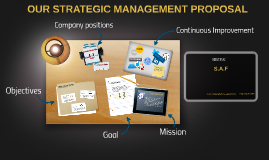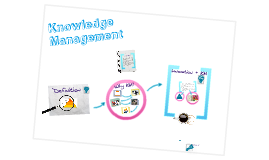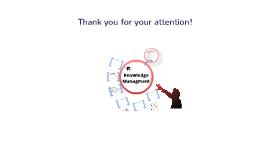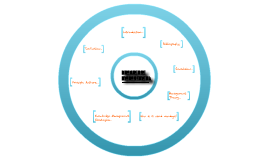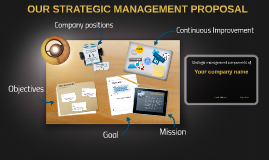Knowledge management
Transcript: A number of claims exist as to the motivations leading organizations to undertake a KM effort.[13] Typical considerations driving a KM effort include: -Making available increased knowledge content in the development and provision of products and services -Achieving shorter new product development cycles -Facilitating and managing innovation and organizational learning -Leveraging the expertise of people across the organization -Increasing network connectivity between internal and external individuals -Managing business environments and allowing employees to obtain relevant insights and ideas appropriate to their work -Solving intractable or wicked problems -Managing intellectual capital and intellectual assets in the workforce (such as the expertise and know-how possessed by key individuals) Knowledge management (KM) comprises a range of strategies and practices used in an organization to identify, create, represent, distribute, and enable adoption of insights and experiences. Such insights and experiences comprise knowledge, either embodied in individuals or embedded in organizations as processes or practices. An established discipline since 1991 (see Nonaka 1991), KM includes courses taught in the fields of business administration, information systems, management, and library and information sciences (Alavi & Leidner 1999). More recently, other fields have started contributing to KM research; these include information and media, computer science, public health, and public policy. Many large companies and non-profit organizations have resources dedicated to internal KM efforts, often as a part of their business strategy, information technology, or human resource management departments (Addicott, McGivern & Ferlie 2006). Several consulting companies also exist that provide strategy and advice regarding KM to these organizations. Knowledge management efforts typically focus on organizational objectives such as improved performance, competitive advantage, innovation, the sharing of lessons learned, integration and continuous improvement of the organization. KM efforts overlap with organizational learning, and may be distinguished from that by a greater focus on the management of knowledge as a strategic asset and a focus on encouraging the sharing of knowledge. Companies use Knowledge Management to; - Improve the cost and quality of existing products or services -Strengthen and extend current competencies through intellectual asset management -Improve and accelerate the dissemination of knowledge throughout the organization -Apply new knowledge to improve behaviors --Encourage faster and even more profitable innovation of new products. Some of the advantages claimed for KM systems are: 1.Sharing of valuable organizational information throughout organizational hierarchy. 2.Can avoid re-inventing the wheel, reducing redundant work. 3.May reduce training time for new employees 4.Retention of Intellectual Property after the employee leaves if such knowledge can be codified. 5.time management Knowledge Sharing remains a challenging issue for knowledge management, and while there is no clear agreement barriers may include time issues for knowledge works, the level of trust, lack of effective support technologies and culture Dimensions Knowledge Management requires managers to; -Catalog and evaluate the organization's current knowledge base -Determine which competencies will be key to future success and what base of knowledge is needed to build a sustainable leadership position therein -Invest in systems and prosseces to accelerate the accumulation of of knowledge - Assess the impact of such systems on leadership, culture and hiring practices - Codify new knowledge and turn it into tools and information that will improve both product innovation and overall profitability Thank you for your attention! Knowledge Management System Introduction Motivations Common uses Knowledge Managment Methology Benefits & Issues of knowledge management Different frameworks for distinguishing between different 'types of' knowledge exist. One proposed framework for categorizing the dimensions of knowledge distinguishes between tacit knowledge and explicit knowledge. Tacit knowledge represents internalized knowledge that an individual may not be consciously aware of, such as how he or she accomplishes particular tasks. At the opposite end of the spectrum, explicit knowledge represents knowledge that the individual holds consciously in mental focus, in a form that can easily be communicated to others.[9] (Alavi & Leidner 2001). Similarly, Hayes and Walsham (2003) describe content and relational perspectives of knowledge and knowledge management as two fundamentally different epistemological perspectives. The content perspective suggest that knowledge is easily stored because it may be codified, while the relational perspective recognizes the contextual and relational aspects of knowledge which can make knowledge difficult to share outside






